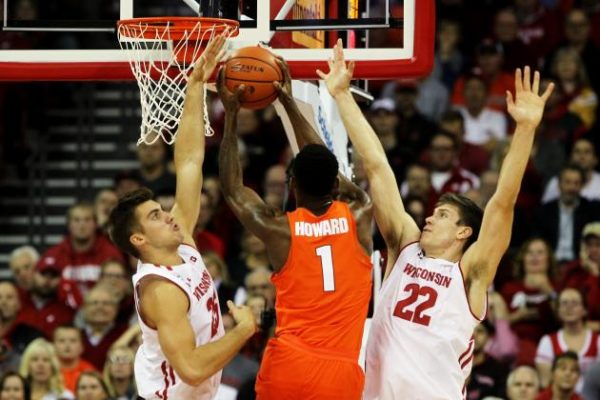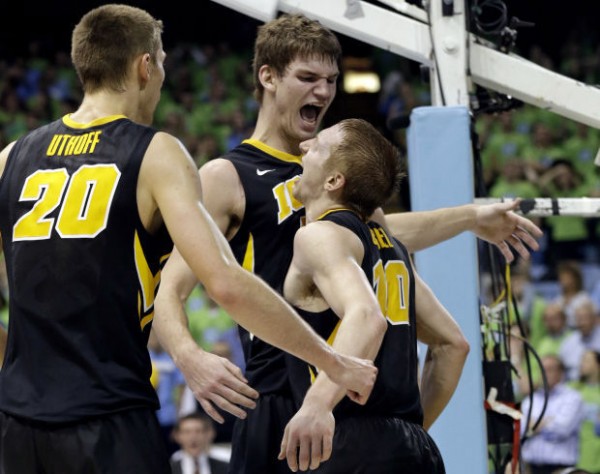Big Ten Weekend in Review
Posted by Brendan Brody on January 31st, 2017We’re now halfway through the conference slate and things still haven’t gotten much clearer in the Big Ten standings. There is a notable top four in Wisconsin, Maryland, Northwestern and Purdue, but nine of the remaining 10 teams reside in the middle of the pack with between three and five conference wins. This has led to quite a few unexpected results, including the weekend haul of Nebraska beating Purdue, Maryland staying undefeated on the road by outlasting a slipping Minnesota squad, and Rutgers very nearly pulling off the biggest upset of the Big Ten season against Wisconsin. Here’s the rest of the weekend’s highlights.

Ethan Happ (right) scored more than half of Wisconsin’s points as it defeated Rutgers on Saturday. (Getty Images).
- Player of the Weekend: There’s no easier way to show it than to let the numbers tell the story. Ethan Happ scored 32 of Wisconsin’s 61 points in an overtime victory at Madison Square Garden. While most of the Badgers were busily clanking away from the outside (Wisconsin shot an ice-cold 12 percent from three-point range), Happ utilized his quickness advantage over CJ Gettys to cause all kinds of damage around the rim. His defensive efforts also led to four steals (the sixth time the sophomore has had more than three steals in one game this season), as the center appears well on his way to a spot on the Big Ten All-Defensive team for the second year in a row.
- Super Sub of the Weekend: With apologies to Jack McVeigh and the 21 points he notched in leading Nebraska to an important win over Purdue, Iowa’s Brady Ellingson picked up the scoring load for the Hawkeyes in the absence of leading scorer Peter Jok. The injured senior has been a do-everything wing for a struggling team, so expectations were low heading into Saturday’s match-up with Ohio State. Instead, Ellingson scored 17 points on 5-for-7 shooting from three-point range, part of a big surge in Iowa’s bench production (44 points). In easily his most productive game in conference play, the sophomore also added four rebounds and three assists with zero turnovers. Ellingson could become a viable threat off the bench for the Hawkeyes the rest of the season.












































